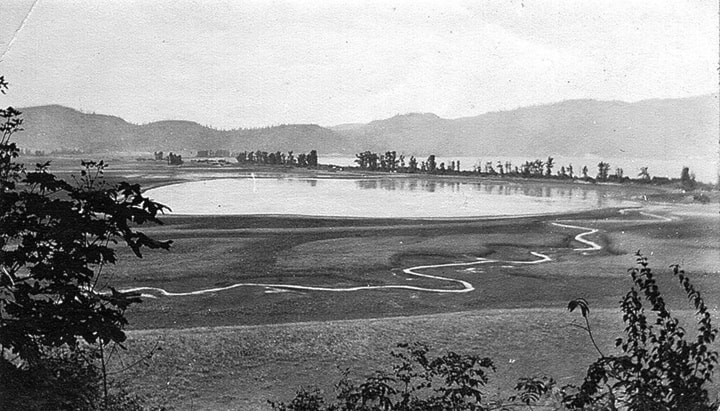The Sumas First Nation is taking the first steps to seek compensation for the loss of Sumas Lake almost a century ago.
Researchers at the Union of B.C. Indian Chiefs are currently working on a claim called Failure of Crown to Protect Sumas Lake and Lands in the Vicinity.
Jody Woods, research director for the union, said the process is in the early stages and could take years to complete.
“From this research, a variety of issues may arise, that’s sort of what typically happens,” explained Woods.
She said the general history regarding the lay out of the Sumas Reserve must be examined first, then they can look at the “relation to the changes in the lake.”
The initial claim and research began last year and while there is no timeline to complete it, Woods said research isn’t the long part of the process. An actual claim could take 20 years to reach a decision.
“They have been going that long,” she said adding the government has created a new claims process but she believes that process “is not working to bring about the fair, just and timely resolution of specific claims, which is its intent.”
Sumas Chief Dalton Silver confirmed that a claim is in progress.
“It’s an idea we talked about with the community and with some other Sto:lo leaders. It’s been something that we’ve talked about for a long time now,” said Silver.
The decision was made to begin the process.
Sumas Lake used to play a huge role in the lives of the Sumas First Nation.
"Basically ever species of fish was there in the lake and it was our main fishing spot," explained Silver.
When it came time to move to the north side of the mountain for a different salmon run, Silver's ancestors would simply canoe across the lake to the new location.
The lake provided food, transportation and even hunting,
"There were islands on the lake that had deer population too."
He explained that hunter would have a torch on the canoe, go after dark and get a deer using a bow and arrow.
"Some would say it was our shopping centre, more or less."
Silver said when the decision came to drain the lake, the government merely told the band's leaders it was going to happen.
"Our ancestors more or less thought it was just crazy. And some of them kind of laughed because what've we heard is that they said these crazy people are going to drain the lake. It just wasn't something our people looked at and though could really be done," said Silver.
He said the draining of the lake is something that would never occur today, calling it an environmental disaster.
"You think about fish habitat and wildlife habitat and everything else that was around it, it would never be allowed."
While the claim process has begun, Silver is realistic about the time it could take to settle the dispute.
"Maybe something will happen within our lifetime."
He is hoping to eventually reach a settlement for compensation with the provincial government that could allow the band to expand its current land.
"The reality is if we want to increase our land base for our reservation, well then, we're going to have to look at buying land."
That would involve the addition to reserve process, another long government procedure.
Currently the Sumas reservation consists of about 600 acres.
The draining of the lake:
Originally, the 10,000 acre Sumas Lake (now Sumas Prairie) was an important fishing spot and a source of travel for the Sumas First Nation.
During the spring freshet, increased water levels due to melting snow and spring rains expanded the lake to as much as 30,000 acres or more, filling the prairie from Sumas Mountain to Vedder Mountain and beyond into Washington state.
Settlers, who arrived in Sumas in about 1860, had to limit the settlement to the ridges of higher land, above the lake level and safe from most but the highest flood levels.
Drainage of the lake seemed to be the answer to all the settlers problems. Studies were made and plans developed but lack of funds resulted in little progress until landowners petitioned the Provincial Government to see a drainage plan through.
In 1920 the Sinclair Plan, which called for an extensive dyking program and internal drainage of the prairie by system of ditches, canals and two pump houses was selected.
During August 1920 construction had began but progress slow. In 1921 additional equipment and manpower was brought in but inclement weather all but stalled efforts. In July 1923 the Sumas Dam and pump house were completed and pumping began, taking nearly a year, until June 1924 to drain the lake.
The now fertile farmland was sold by the acre
- information courtesy of The Reach
